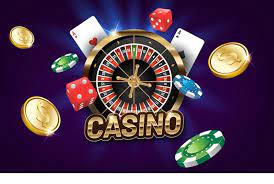Introduction:
Slot machines, often referred to as “one-armed bandits” or simply “slots,” have come a long way since their humble beginnings in the late 19th century. What started as mechanical marvels with levers and gears has transformed into digital delights that dominate the floors of modern anti rungkad. This article explores the fascinating evolution of slot machines, tracing their journey from the first mechanical device to the high-tech, immersive experiences of today.
I. Birth of the One-Armed Bandit:
The origins of slot machines can be traced back to the late 1800s when a mechanic named Charles Fey invented the first-ever mechanical slot machine in 1895. Known as the Liberty Bell, this three-reel machine featured five symbols – horseshoes, diamonds, spades, hearts, and a Liberty Bell. Fey’s creation paved the way for the modern slot machine and introduced the concept of automatic payouts.
II. The Rise of Electromechanical Slots:
In the mid-20th century, slot machines underwent a significant transformation with the advent of electromechanical technology. The iconic Bally Technologies introduced the Money Honey in 1963, the first fully electromechanical slot machine. This innovation allowed for more complex game features, including multiple coin bets and higher payouts.
III. Video Slots Take Center Stage:
The 1970s saw another major leap in slot machine technology with the introduction of video slots. These machines replaced physical reels with virtual ones on a video screen, allowing for a broader range of themes and bonus features. IGT’s Fortune Coin, introduced in 1976, marked the beginning of the video slot era and set the stage for the digital revolution.
IV. The Digital Revolution:
The late 20th century brought about a complete shift from mechanical and electromechanical systems to fully digital ones. The development of microprocessors and random number generators (RNGs) paved the way for computerized slot machines. This shift allowed for more intricate game designs, sophisticated graphics, and the incorporation of progressive jackpots.
V. Online Slots and the Internet Age:
The rise of the internet in the late 20th century brought about a new era for slot machines. Online casinos began offering digital versions of classic slot games, allowing players to enjoy their favorite pastime from the comfort of their homes. The convenience and accessibility of online slots contributed to their widespread popularity.
VI. Mobile Gaming and Slot Apps:
With the proliferation of smartphones, the slot experience became even more portable. Mobile gaming apps allowed players to enjoy their favorite slots on the go. Developers capitalized on touchscreen technology to create engaging and interactive slot games tailored for mobile devices.
VII. Immersive Experiences and 3D Slots:
Today’s slot machines are characterized by their immersive graphics, intricate storylines, and 3D animations. Advanced technology has allowed developers to create visually stunning games that go beyond simple spinning reels. Themes range from ancient civilizations to futuristic worlds, providing players with a diverse and captivating gaming experience.
Conclusion:
From the mechanical simplicity of the Liberty Bell to the high-tech, immersive experiences of today, slot machines have undergone a remarkable evolution. The journey from one-armed bandits to digital delights showcases the ingenuity of developers and the adaptability of this beloved form of entertainment. As technology continues to advance, the future promises even more innovations, ensuring that slot machines remain a vibrant and integral part of the gaming landscape.




